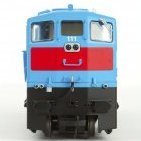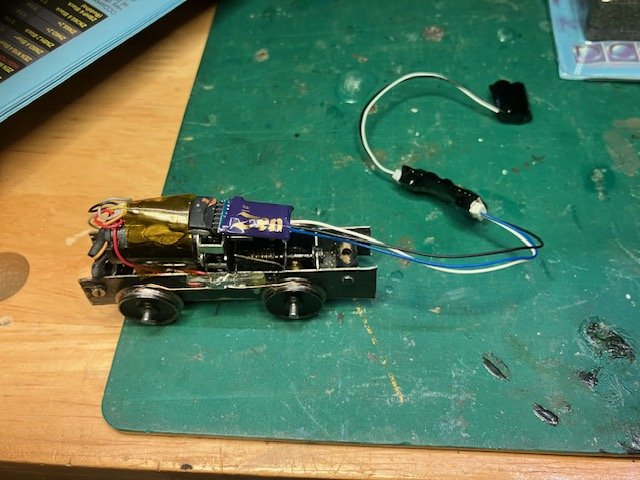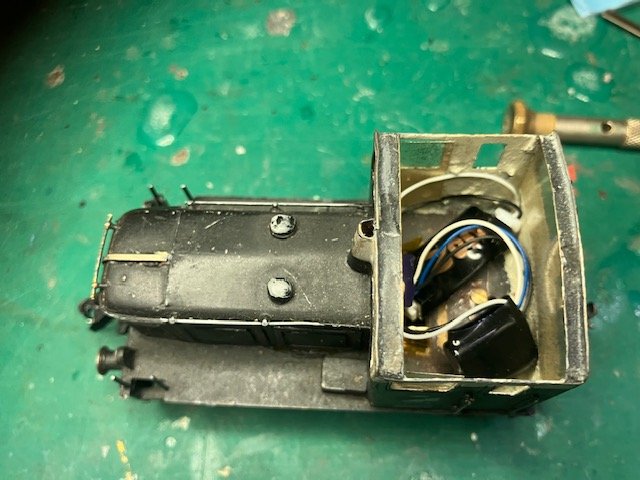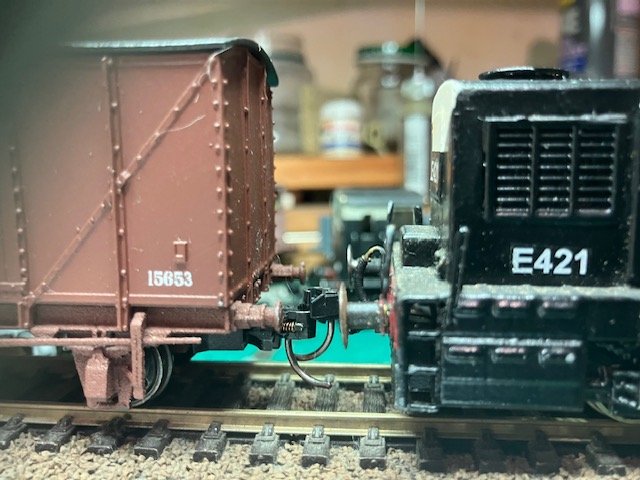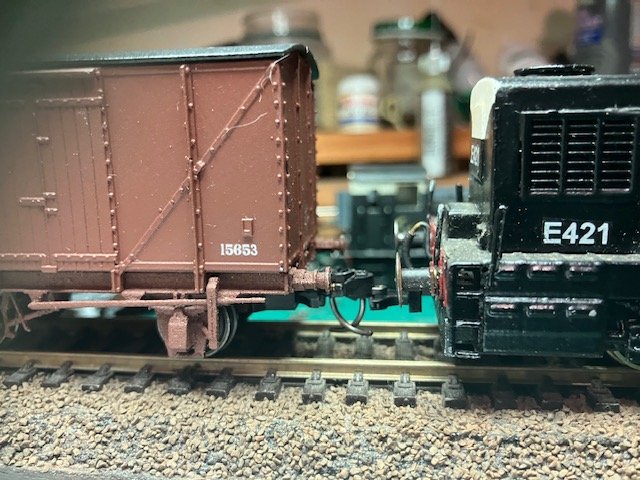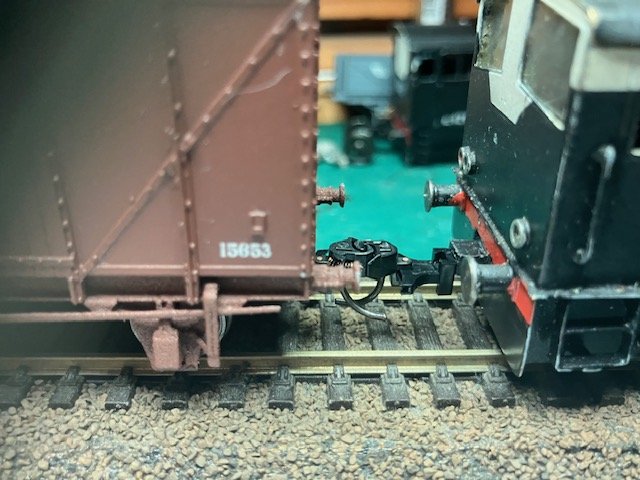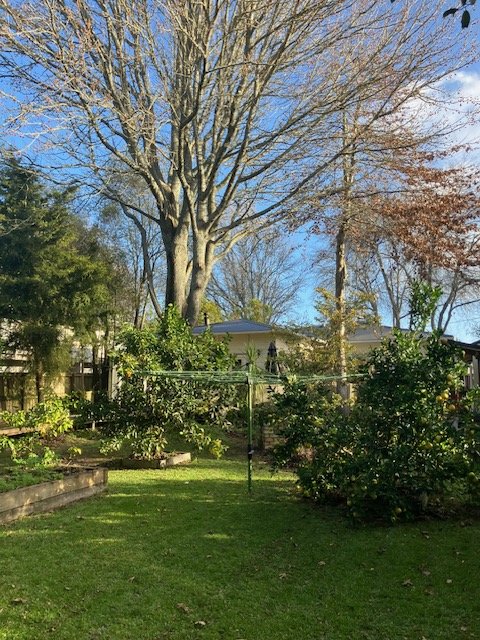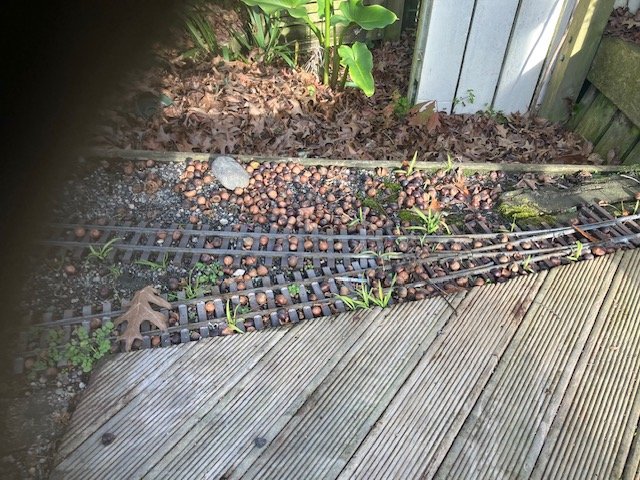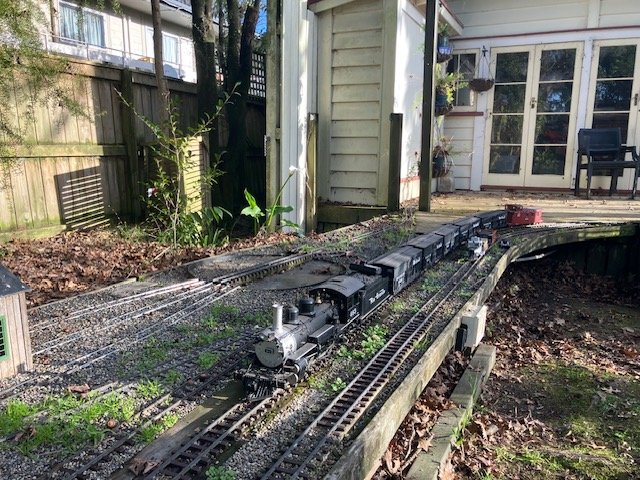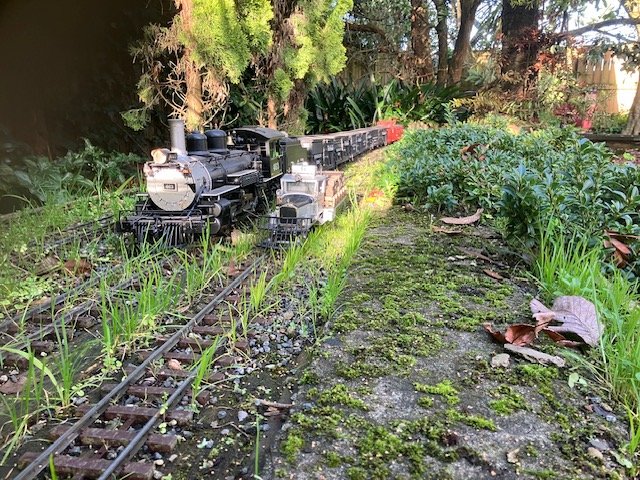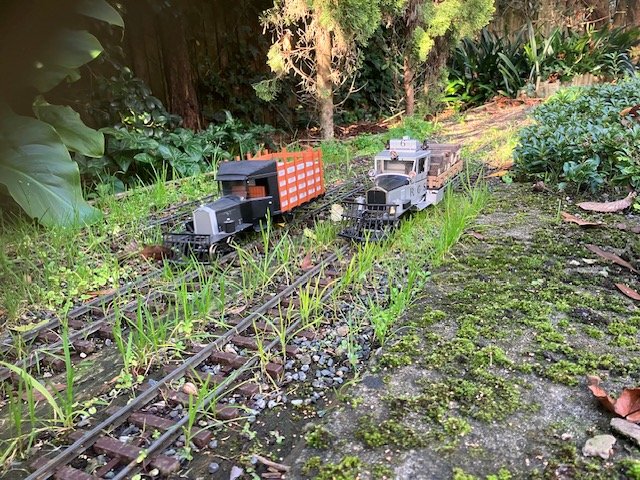-
Posts
4,725 -
Joined
-
Last visited
-
Days Won
116
Mayner last won the day on June 26
Mayner had the most liked content!
Personal Information
-
Location
Hamilton, New Zealand
Converted
-
Biography
Born Dublin, lived most of my life in Dublin and the UK. One time builder, moved to New Zealand several years ago. One time WHHR Volunteer Portmadoc, track ganger, diesel loco driver and bulldozer driver, plant operator, now an Armchair
Converted
-
Interests
My family, solving problems, anything to do with railways, travel, blues, rock, jazz, stirring thing
Recent Profile Visitors
The recent visitors block is disabled and is not being shown to other users.
Mayner's Achievements
-
The IE 2040 Freight Strategy speaks about establishing 'Strategic Freight Hubs (IE speak for Inland Ports) in West Dublin & Limerick Junction area and "Tactical Railfreight Terminals" in colloboration with the road transport industry in Cork, Galway and Sligo which appears consistent with international practice. These days Inland Ports and Railfreight Terminals are usually operated as a joint venture operation between property owners and the freight/logistics industry not unlike Daventry International Freight Terminal in the UK.https://www.irishrail.ie/Admin/getmedia/685e9919-f012-4018-879b-06618bb536af/IE_Rail-Freight-2040-Strategy_Public_Final_20210715.pdf Ironically there were private sector proposals for Inland Ports with rail links to the Cork line just west of Clondalkin and near Portlaoise about 25-30 years ago but nothing further came of these schemes. The Clondalkin inland port would have made sense for both domestic and import/export traffic with most of Dublin's industry located to the West of the City potentially allowing the majority of Liner Trains to run direct from Clondalkin to their provincial destinations as opposed to the North Wall Yards and a shuttle service of Dublin Port. Inland Ports and smaller purpose built intermodal terminals have become an integral part of railfreight operations in this part of the World largely replacing the old railway owned/operated terminals. Locally Hamilton's existing railfreight terminal was replaced about 20 years ago by an inland port operated in conjunction with Fonterra NZ largest dairy processing companies which incorporates the largest cold store in the Southern Hemisphere https://www.odt.co.nz/business/fonterra-opens-nzs-largest-cool-store-hamilton. (12 ---17.28m wagon train fits within store), more recently (last 5) Ruakura Inland Port was established to the east of the City in a joint venture operation between the property owners and the Port of Tauranga. https://www.ruakurainlandport.co.nz/ 90Km away in the South Waikato a smaller Tokoroa "Intermodal Business Park" operated in 2015 as a joint venture operation between the local Council and a Logistics business has helped both in transferring traffic from road to rail and bring new businesses to a town that has been hard hit during the last 20 or so years as a result of decline in the timber and paper processing industry.https://www.stuff.co.nz/waikato-times/news/71687441/multi-million-dollar-rail-vision-comes-to-fruition-in-tokoroa Interestingly during the last 30 years businesses have had the confidence to continue investing in Inland Ports and new Rail Terminals despite uncertainty over the long term future of rail. Back in the day when CIE/IE operated a railfreight network up to the early 2000s the majority of Freights departed the Dublin freight yards in the evenings often after the departure of the evening passenger trains to the provinces and departed the provincial terminals to arrive in Dublin early-mid morning. The 12:00 North Wall---Cork North Esk seemed to be something of an exception, though Bagged cement and Fertiliser seemed to run in day time at a time there may have been no shortage of freight paths when 3-4 return passenger services majority of Intercity routes with slightly more frequent services on the Dublin-Cork and Dublin-Galway (via Tullamore) routes. I guess we have about 15 years to find out whether the IE Rail Strategy is real or bull!
-

Heritage Railways in the Republic of Ireland
Mayner replied to Celtic_transport's topic in General Chat
A few points to consider. 1. Transport Museums in New Zealand including our new National Railway Museum are controlled by similar groups to the RPSI and other preservation/historical societies, with some support from Councils (often as landlord) in a similar manner to sports clubs who use public facilities). Funding is mainly through donations (corporate & individual) and bequests. 2. Auckland City Council supports its transport museum MOTAT (Trams, Trains, Planes & road) through a levy on the Council rates. https://www.motat.nz/about/corporate/governance/ 3. Having worked in similar positions Ireland, the UK and New Zealand over the past 40 odd years I paid a similar proportion of tax on my income in all three countries . In my experience the myth of the Irish being less well off individually does not appear to have held true. I seem to have been better off financially while working in Ireland than the UK, marginally better salary levels and higher levels of tax free allowance and deductible expenses tended to off set the higher Irish income tax rate. The 1977 abolition of Domestic Rates significantly reduced Irish household living costs in comparison with the UK where householders continue to be required to pay rates in the form of Poll and later Council Tax and Water Charges 4. Although Ireland recently re-introduced domestic rates in the form of LPT, the proposed LPT for properties of similar value in Ireland and New Zealand appears to be about 1/5 my total current rates bill. 5. Although housebuilders and developers a sector that was hit hard by the 73-4 Oil Crisis and welcomed the 1977 Governments abolition of domestic rates, the introduction of a 1st Time Home Buyers Grant, the ending of price control on new homes, in retrospect the new policies did more damage that good, contributing to a concentration of power in Central Government by reducing Council income by 30% and an inflationary boom in the construction industry which in turn lead to the Irish recession of the Mid 80s. Ironically housebuilding was experiencing signs of recovery when I started working in the industry in 76 with increased sales and new developments selling out quickly, the Home Buyers Grant was treated as a subsidy increasing house prices by the value of the grant when announced and shifting to building higher margin more expensive homes following the ending of price control and banks easing lending restrictions. I worked for a company that shifted from building £14K terraced homes in Dublin's inner suburbs in 1976 to £50+K detached homes in more highly priced suburbs by 1978, I built my first £100k home in 1980. The abolition of Domestic Rates basically hamstrung councils in their efforts to support local groups such as railway preservation societies in a similar manner to the UK, NZ and Australia. I suppose the question is how commercial ratepayers would have reacted in 2000 to a proposal to establish the planned National Railway Museum in Mullingar through a levy on their rates? -

(Almost) Brand new out of the box. Class 93 Tri-mode on test
Mayner replied to leslie10646's topic in Irish Models
When I first read your Post I thought you were trying to flog off a 'recently un-boxed " Trix AL1 electric loco. https://www.vectis.co.uk/d049-lot-994495-trix-trains-2-rail-1128-bo-bo-br-blue-class-al1-overhead-electric- 5 replies
-
- 1
-

-
- railway operations group
- class 93
-
(and 1 more)
Tagged with:
-
Although fitted with a 'stay alive" (bought several years ago) G617 sometimes stalled on Insulfrog points, so decided to fit the loco with an updated version of DCC concepts 'stay alive' system with a 3 wire medium stay-alive with a separate control unit. Existing Zen decoder and 2 wire hardwired stay alive Mechanism fitted with Zen decoder with 'plug & play' medium stay alive and control unit In order to convert to DCC I fitted the loco with a 6Pin decoder socket & DCC harness mounted on top of the motor. I test run the chassis and programmed decoder CV25 -2 for "Light Freight" before I fitted the loco body the stay alive and wiring are just about below window level and not really visible with the roof fitted. Coupler height needed to be sorted with E421 and G617 to achieve reliable operation. Apart from a slot for a screw or 3 link coupler there was no provision for fitting a proprietary coupler when I originally assembled these locos several years ago and I cut the holes for NEM coupler pockets at an incorrect height! Unfortunately due to the lack of space the coupler pockets on G617 project past the buffer beams which results in a greater distance between the loco and wagons than B125 and E421 To overcome the problem I replaced the existing Kadee#19 couplers with adjustable height #53 couplers. Both locos now couple reliably! SSM are supplying replacements for damaged decals on both locos and hopefully I will complete paint touch-ups and fit glazing to E421. I will probably use E421 to replace B125 for Trip/Main Line work with the G Class shunting the yard and off-scene oil/tar depot/industries.
-
Leaf fall from our largest trees (oak & liquid amber) has just about ceased after 3 months and time to shift the remaining leaves and debris to mulch beds around the garden. Have basically been blowing/collecting leaves since the beginning of April Liquid Amber (left) and oak (right) planted as a sapling in 2008! There is also a large oak on the roadside at the front of our house, which basically covers the garden at the front of our house and roof in leaves. Along with the leaves the Oak creates lots of nuts which collect in the 3' and on our deck and trackbase. One of our first sunny days after a week of heavy rain was a good excuse to run some train to check the line before running live steam. High humidity and rainfall makes the Waikato an excellent place for growing grass, dairy farming and rather surprisingly producing tea and wine. I basically need to bring out the weedkiller to keep vegitation under control! The day was also an excuse to bring out the refurbed Bachmann Railtruck, parts of which in-real life were incorporated into Motor #6 on right. 70 years later an enthisiast Karl Schaffer created a replica of the Railtruck for display at the Ridgeway Railroad Museum. Its just about possible that Motprs #1 & #6 may be seen together as they are both preserved in working order in Colorado.
-
4W Vans include Heating and Luggage Van or "Tin Van", Luggage Van or "Hooded Van" and PO Van/"Heuston Tool Van" Our prices for UK customers are inclusive of VAT as the etches are supplied direct from our engravers in Scotland, prices for customers outside the UK exclude VAT Shipping is usually Royal Mail Registered Post, I can confirm total cost including shipping upon receiving an expression of interest, lead time from placement of order to shipping usually 4-6 weeks. The Van Roofs are supplied as a separate etch and I am considering the option of producing a 3D printed roof as forming an elliptical roof may be challenging for some modellers. I am also considering making detail parts such as buffers, oil tanks and axleguards available as 3D printed parts. Prices: UK customers Van etches £35.00 Roof etch £16.80 Non-UK customers Van etches €38.00 Roof etches €17.00 Heating & Luggage Luggage Van PO Van The etched van parts include two sets of sides to cover a number of in-service modifications. Panels with windows were replaced with plain panels on some heating and luggage vans. Some PO Vans were converted to Tool Vans after the vans were withdrawn from mail service. MGWR Horse Box and Meat/Fish Van These items of Non-Passenger Coaching Stock remained in service on CIE until withdrawn in the late 1950s, there is even a photo of a Meat Van and a 1880s MGWR 6 w TPO coupled between a Tin and a Hooded Van on the Sligo Night Mail Some of the detail castings incl. buffers axlebox/springs and syphon roof vents may be available from the Dart Castings MJT range, I may make the handbrake wheels and Meat Van end posts/louvres available as 3D printed items. (The MGW van frets include a roof!) Prices: UK customers MGW non-passenger stock etches £25.00 Non-UK customers Van etches €29.00 MGWR Meat-Fish Van MGWR Horsebox
-

Heritage Railways in the Republic of Ireland
Mayner replied to Celtic_transport's topic in General Chat
While the WSVR certainly ticks the box in terms of a populous and busy local market, though the founders of the Cavan & Leitrim have managed to re-open a section of the original line and restore a couple of steam locos in a much sparsely populated area largely as a result of the dedication of the companies founders and its supporters group. As Chris pointed out there are a hell of a lot more Heritage Railways some of which only operate 1-2 monthly in New Zealand a country with a similar total population to the Republic spread out over a land mass of similar land area to the UK. Our local heritage line the aptly named Bush Tramway operates over 3-4 miles of line in sparsely populated Bush west of Huntly a small former coal mining town (with its own heritage museum) about 60 miles from Auckland (similar pop to Dublin) and 18 miles from Hamilton (similar pop to Limerick). The Bush Tramway now operates once monthly although at one stage only operated in the Winter/Spring months due to high fire risk during summer and autumn. By a rough count New Zealand has 28 operating Heritage Railway and 4 Main Line Steam/Tourist train operators which break down fairly evenly between the North Island (76%) and much less densely populated South Island (24%). Apart from a handful of heritage lines that operate daily or weekly the majority operate 1-2 monthly or less frequently. Another feature is that our 3 major cities each have a transport/local history museum/historic park which features an operating railway and section of street tramways. https://www.fronz.org.nz/railway-tramway-attractions I guess a higher proportion of people in New Zealand compared to Ireland are interested in railways and more significantly are prepared to contribute financially and physically to heritage railways and museums. -
Received an e-mail that 4D planning to resume their workshop services including etching in a few weeks.
-
Scene of cattle being loaded on to a train at Cork Goods 1975 10:39 of video. Interestingly cattle truck seems to be a 2 axle Hino with a drawbar trailer with cattle unloaded in the yard and allowed to walk to the cattle bank. A Ford D, Bedford TK, Dodge K1050 were popular medium size trucks of the time. Cattle traffic on CIE ceased in late 1975
-

Heritage Railways in the Republic of Ireland
Mayner replied to Celtic_transport's topic in General Chat
I can only speak from my experience as a member of the Welsh Highland Heritage Railway in the UK, the railway was required to establish an Accredited Museum (with appropriate facilities) separate from its heritage/tourist railway operations in order to resister as an Educational Trust for tax purposes. The museum in a purpose built about 20 years ago as annex to the existing Carriage Shed focused on the history of the transport of slate by rail from the quarries to the quays at Portmadoc and included a combination of static and mobile (some on loan from the Festiniog) exhibits. Presumably the Trust would have been able to claim tax relief on donations towards the cost of constructing, operating and maintaining the museum. Interestingly the WHHR markets itself as a short-train ride which included a museum visit (the train guard usually acts as museum guide. The main benefit of the museum is that it increases the time spent by visitors on site and the likelyhood of them spending more time in our shop or cafe potentially increasing our visitor income. I guess at the end of the day the question is whether the effort and expense of maintaining a museum is worth while on an operation like the WSVR when it may be more worth while to increase turnover through shop and cafe sales. -
Just received an e-mail that 4D Model Shop the firm that produced the etch parts for Paul's E401 Class is closing on 30 June. I guess final chance for anyone to place an order for a CIE E401 Class shunter
-
I am planning to supply Coaching Stock etches to order direct from our photo engravers in the UK beginning with our CIE 4w Van and MGWR Horse Box and Meat Fish Van etches and expect to have an updated price list during the next two weeks. I am considering producing sets of etched parts for 1951-53 Inchacore built coaches previously supplied as overlays for converting Dapol/Airfix 60' Stanier coaches to CIE stock. The proposed sets of parts similar in principal to Worsley Works/Comet coaches, supplied with an etched roof to be formed to profile by the builder. At this stage I am looking at producing Buffet Car, Brake Second and will produce further sets of parts if there is sufficient interest based on enquiries for a minimum of 10 of each type of coach.
-

Heritage Railways in the Republic of Ireland
Mayner replied to Celtic_transport's topic in General Chat
Interestingly there was a feature on the Tv the other night about the Glenbrook Vintage Railway (near Auckland) is running a train (steam and diesel hauled) to Palmerston North (over 400km) for this years Matariki (Maori New Year) Festival https://www.facebook.com/glenbrookvintagerailway/ the hosts Steam Incorporated near Wellington proudly pointed out that this would be the first time that trains would be crewed by heritage railway personnel (presumably with a Kiwirail pilot). -

Heritage Railways in the Republic of Ireland
Mayner replied to Celtic_transport's topic in General Chat
In was estimated in 2001 that £ 10 million was required to establish the proposed National Transport Museum at Mullingar Station. https://www.irishtimes.com/news/preservation-is-train-of-thought-in-mullingar-1.334938 . Apparrently it was expected that Central Government & possibly EU would fully fund the project, the article speaks about the Muesum Group expecting to meet the Minister of Arts, Culture, Gaeltacht and the Islands to request £1 million in funding for immediate conservation work (urgent repairs). It looks like the museum was proposed by a local group which may not have given up on the hope of establishing a museum despite serious setbacks https://www.westmeathexaminer.ie/2014/03/19/dreams-of-a-rail-museum-in-mullingar-dealt-a-blow/ I wonder are the museum group still about or have considered other sources of fund raising? -
Looks very neat Alan and should be robust enough for exhibition use. I use a similar concept for aligning the traverser on a OO layout and turntables on my large scale garden railway using 1mm bore brass tube & 1mm brass wire (formed into an L shape) as the bolt/alignment pin. The brass sleeves are bored vertically (a tight fit) into the traverser deck and frame and soldered to rail web on the turntables which at this stage have stood up to 15 use with quite heavy locos, though I have to occasionally replace the odd pin. I was able to set the drawer runners on the traverser vertical having an 80mm baseboard depth.
.png.c363cdf5c3fb7955cd92a55eb6dbbae0.png)

